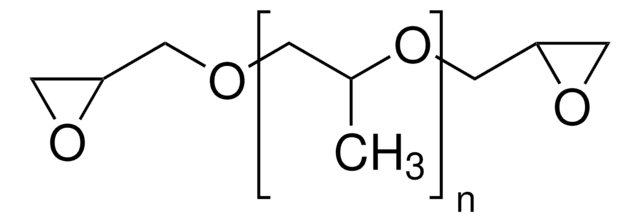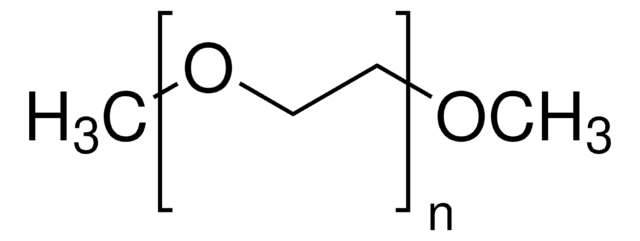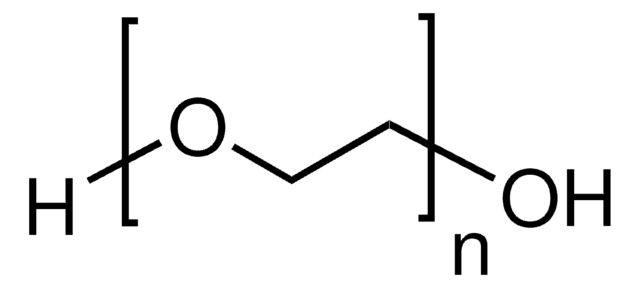推荐产品
产品名称
聚乙二醇二缩水甘油醚, average Mn 500
分子量
average Mn 500
质量水平
反应适用性
reagent type: cross-linking reagent
reactivity: amine reactive
折射率
n20/D 1.47
Ω端
epoxy
α端
epoxy
聚合物结构设计
shape: linear
functionality: homobifunctional
储存温度
2-8°C
SMILES字符串
O1C(C1)COCCOCC2OC2
InChI
1S/C8H14O4/c1(9-3-7-5-11-7)2-10-4-8-6-12-8/h7-8H,1-6H2
InChI key
AOBIOSPNXBMOAT-UHFFFAOYSA-N
正在寻找类似产品? 访问 产品对比指南
一般描述
应用
相关产品
储存分类代码
10 - Combustible liquids
WGK
WGK 3
闪点(°F)
386.6 °F - closed cup
闪点(°C)
197.00 °C - closed cup
个人防护装备
Eyeshields, Gloves
从最新的版本中选择一种:
分析证书(COA)
商品
Scaffold patterning with poly(ethylene glycol)-based hydrogels for cell presence in 2D and 3D environments on photoactive substrates.
Progress in biotechnology fields such as tissue engineering and drug delivery is accompanied by an increasing demand for diverse functional biomaterials. One class of biomaterials that has been the subject of intense research interest is hydrogels, because they closely mimic the natural environment of cells, both chemically and physically and therefore can be used as support to grow cells. This article specifically discusses poly(ethylene glycol) (PEG) hydrogels, which are good for biological applications because they do not generally elicit an immune response. PEGs offer a readily available, easy to modify polymer for widespread use in hydrogel fabrication, including 2D and 3D scaffold for tissue culture. The degradable linkages also enable a variety of applications for release of therapeutic agents.
Designing biomaterial scaffolds mimicking complex living tissue structures is crucial for tissue engineering and regenerative medicine advancements.
我们的科学家团队拥有各种研究领域经验,包括生命科学、材料科学、化学合成、色谱、分析及许多其他领域.
联系技术服务部门




